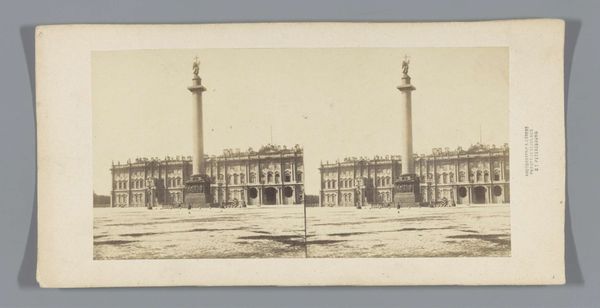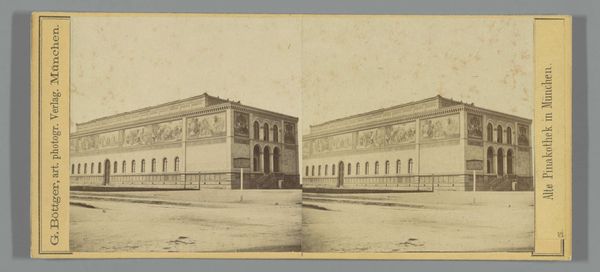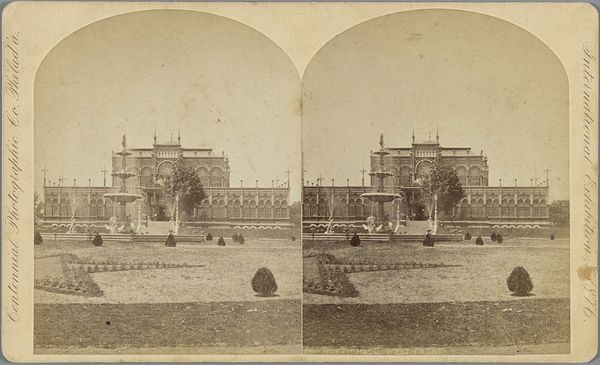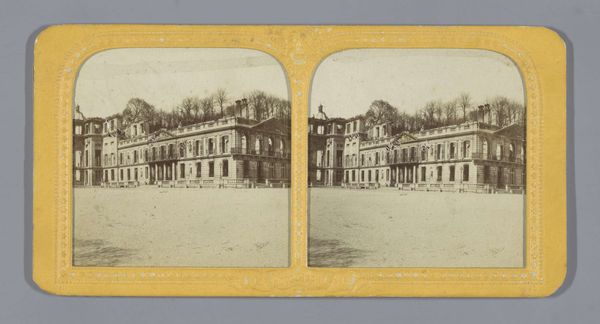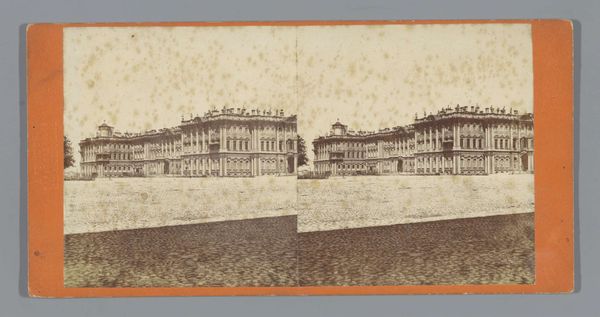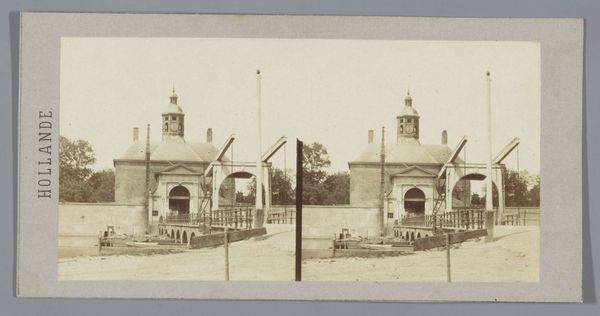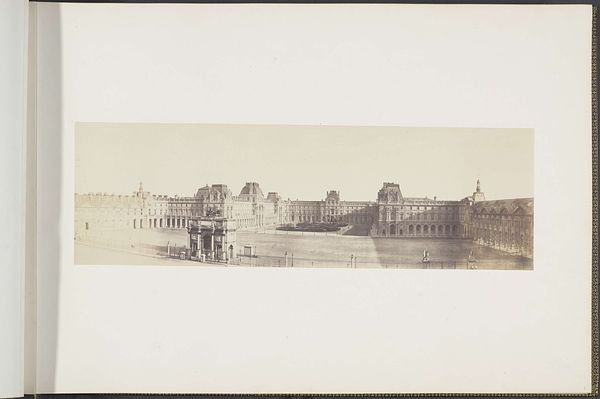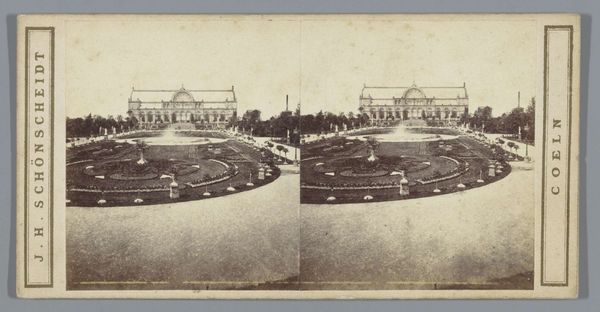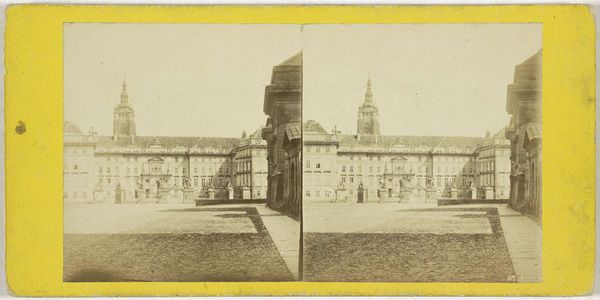
Dimensions: height 83 mm, width 176 mm
Copyright: Rijks Museum: Open Domain
Editor: Here we have an albumen print photograph from around 1851-1880, titled "Voorzijde van Paleis van Versailles." It shows the facade of the Palace of Versailles. I find the composition a bit rigid; what structural elements do you observe? Curator: The stereoscopic format is key. We have paired images which produce an illusion of depth. Observe how the strict horizontality of the palace architecture and the balustrade contrast with the orthogonals formed by what appears to be some sort of construction framework; they pull the eye into space, creating a very clear foreground, middle ground and background. Editor: Yes, I noticed that pull, almost as if the space is being built, or revealed to the viewer through careful arrangement. What do you make of the subdued tonal range? Curator: Notice how the photographer handles light and shadow. The relatively limited grayscale emphasizes texture – look at the gradations across the courtyard versus the more definite shadows that articulate the statuary and building facade. Also note the almost clinical quality to the photography itself; there is very little atmospheric haze or evidence of a personal “touch.” Editor: So, the aesthetic impact lies less in personal expression and more in the geometric precision of its composition, combined with the photographic rendering? Curator: Precisely. The structure itself becomes the subject and focus, overshadowing any potential social or emotional narrative. We see neoclassicism not only as a represented style, but enacted within the photograph's form. Editor: I hadn’t considered how the photographic style itself could embody the neoclassical aesthetic. Thanks for pointing that out! Curator: A pleasure. There’s always something new to see when you look at form first.
Comments
No comments
Be the first to comment and join the conversation on the ultimate creative platform.


